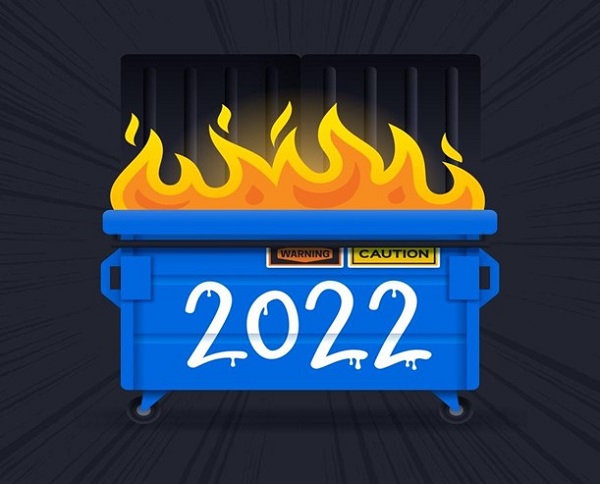For decades, plain vanilla financial advisors have pitched a “4% withdrawal rate” as a retirement solution. Most were lazily stealing this advice from the smart, thrifty fellow who created the rule.
The 4% idea is that someone with, say, a million-dollar nest egg could safely withdraw $40,000 per year and probably not run out of money before they die. Or, at least, have it last for 33 years.
(And oh, by the way, they’d better hope that the financial poem keeps rhyming with a previous 50-year period. But I digress…)
Not the most inspiring idea, I know. So why are we even talking about this today?
The 4% rule is back in our Contrarian Income news because creator William Bengen is nine years into retirement—and he’s “not comfortable.” Bengen admitted this to the Wall Street Journal, adding that he’s cutting back on restaurants.
Billy B.! I live in California, home of the $15 sandwich—and I feel compelled to take my man here out for a burger.
After all, Billy’s a smart guy who led an impactful career. I would love to buy my guy a beer, too, and perhaps also a subscription to Contrarian Income Report, Hidden Yields or Dividend Swing Trader so that he can fund a proper retirement for himself.
For our readers who are not familiar with Bengen, he was an aeronautical engineer and MIT grad who left his family business to become a financial planner.
His clients kept asking how much cash they could withdraw from their accounts in retirement and still have “enough” for ups and downs, given the vagaries of “the market.” Like a true MIT engineer, Bengen crunched the numbers. He looked at 1926 to 1976, which included several booms in America, as well as stagflation, a world war and a depression. In short, a little bit of everything.
Bengen found that a 50-50 (or so) mix of stocks and bonds and a 4% withdrawal rate made most nest eggs last. In fact, the earliest the egg would “crack” was 33 years in.
Retire at 60, be good until 93. Not bad.
Problem is, 4% isn’t much, and most people don’t have a million dollars saved. A $500K portfolio pays just $20,000 using the 4% rule.
And for new retirees, is this really the best time to start drawing down capital? We have a land war in Europe, started by an autocrat threatening nuclear weapons. Inflation tops 8%. And a previously sanguine Federal Reserve now can’t hike rates fast enough.

If the stock market drops, then 4% rule disciples must sell more shares to live off of. Selling low? Nah, we’ll pass.
Most of us built our nest eggs by buying low and selling higher. We dollar-cost averaged (“DCA’d”) our way to retirement.
The 4% rule is reverse DCA. No thanks.
Billy admits he isn’t comfortable because “the combination of threats we face could be damaging.” This is why we need to hook our boy up with a subscription or three.
It’s why, here at Contrarian Outlook, we prefer to retire on dividends.
Instead of a shaky 4% withdrawal, we adhere to a 7% “No Withdrawal” Retirement Portfolio. We live on dividends and never touch our capital.
Keeping our hands off principal is crucial in 2022. With inflation running hot, we don’t want to reverse DCA. We must create cash flow from dividends, so that our nest egg can keep running.
Here’s what I mean. As I write, our top 13 CIR holdings yield 7.7% on average. This baker’s dozen is throwing off $77,000 in dividends per year for every million invested.

I get why this No Withdrawal strategy blows the minds of academics. (“Daddy, you just blew my mind up,” is the official slang my daughter uses.)
- In academia, financial markets are said to be perfectly efficient.
- In perfectly efficient markets, deals (dividends or otherwise) do not exist.
- Therefore, any attempt to retire on more than 4% or so is pointless. It is the best that one can do.
For our contrarian counterpoint, I present New Residential Investment (NRZ). NRZ yields 9.4%. Cornell Engineering may not quite be MIT Engineering, but as a graduate of the former, I can still confirm that 9.4% is greater than 4%.
Plus, the price of NRZ will likely rise. The firm owns a boatload of mortgage service rights (MSRs). These gain value when refinancing activity slows, happening right now while long rates jump.
As long rates ascend, mortgage rates likewise hitch a ride. They’ve quietly spiked and are now at their highest levels since 2018!
Dividend deals like NRZ aren’t supposed to exist in a perfectly efficient market. Fortunately, it’s inefficient, and opportunities like these are out there. (Perhaps thanks to the money managers who pitch the 4% fallacy and don’t bother to look!)
There are plenty of Secure 7% “No Withdrawal” Retirement Dividends that will do just fine in this manic market. While 2022 is shaping up to be a dumpster fire, these dividends will keep coming. Plus, their stock prices will rise with inflation, so we needn’t consign ourselves to homemade sandwiches for the rest of our years. Please click here for my favorite 7% dividends.
